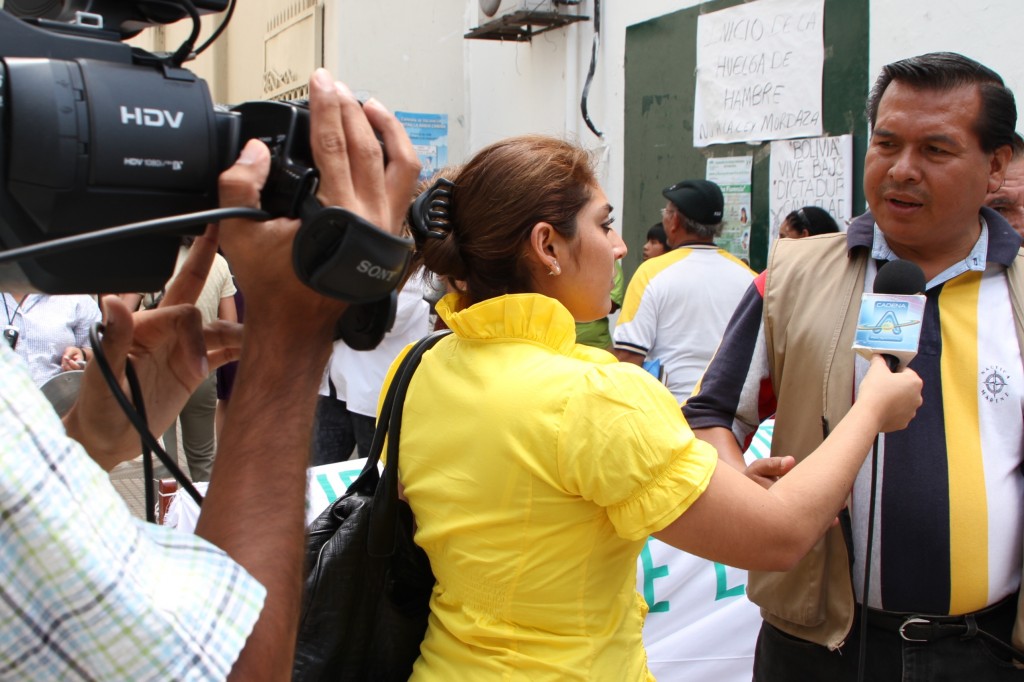Different approaches to web video vox pops
The vox pop is one of those classic devices in a journalist’s storytelling toolbox. It’s a snapshot of public opinion about a given topic, and more often than not, a controversial one.
But when you take the vox pop online and use it within a multimedia story, or produce web video content, there’s the opportunity to be creative and offer more than just producing a simple series of talking head shots.
Doing something different
50 People, One Question
These are a series of vox pops and are largely what they say they are: a lot of people attempting to answer the same question. As a whole it’s a little bit like a short documentary. And of course, as a vox pop, it’s much longer than what you might normally produce for news programming
The use of shallow depth of field certainly gives the film a more cinematic feel. This can be achieved with a DSLR camera or with a video camera using a lens adapter. It’s playful in the way the subjects are pulled in or out of focus in setting up each interview. I also love the end of the video where we see interviewees leave the frame.
Iraq Votes
This vox pop is part of multimedia package produced by AP Interactive in the lead up to the elections in Iraq in 2010. Click through on the image above to enter the website hosting the package.
From the screenshot you can see that navigating through the multimedia elements is straightforward via the drop down menu across the top. Voter Voices was the first element I clicked on and it instantly launches the video vox pop.
What makes this vox pop different is that it not only gives you a variety of opinions about the elections, but it also shows a slice of everyday life in a nation that is often portrayed through the prism of conflict.
The use of music is subtle, yet it helps convey a sense that we’re about to hear the opinion of ordinary people. Using setting up shots as a subject comes into focus and cutaways of people in the park makes for a very polished production and it suits this more in-depth multimedia feature.
Using a different program for editing
Following the 2011 Global Media Forum in Bonn, the DW Africa blog team had some good feedback from the short video vox pop we produced on the topic of should internet access be a human right. And, we had a lot of questions about how we produced the video – especially the layout and how we added basic animation to the clips.
Internet Access as a Human Right – GMF Vox Pop from DW Akademie – Africa on Vimeo.
Deutsche Welle’s Chiponda Chimbelu filmed all of the video interviews using a small Kodak Zi8 pocket camcorder and a Sennheiser microphone. Using this sort of small “flip cam” adds a bit of pressure in achieving a stable shot and sharp focus. After selecting the best clips to showcase a variety of opinion, we trimmed them very quickly using the open source MPEG Streamclip. We then turned to a program that you might not associate with video production: Keynote – Apple’s version of Window’s PowerPoint.
In Keynote we chose a simple black background for our slide, added some text for the topic, then dragged and dropped each video into the slide and with a little trial and error resized the six video clips. And, we must say that the initial inspiration for this vox pop was the opening titles of the American TV series – the Brady Bunch.
Once we had all our clips in place, we used Keynote’s Inspector tool to create the animated Pop effect and to adjust the timing for each video to pop in on cue. This took a little trial and error, but once that was set we simply exported the slide as a Quicktime movie.
For more details on using Apple Keynote in this way, check out this Larry Jordan tutorial.
Author: Guy Degen







Feedback